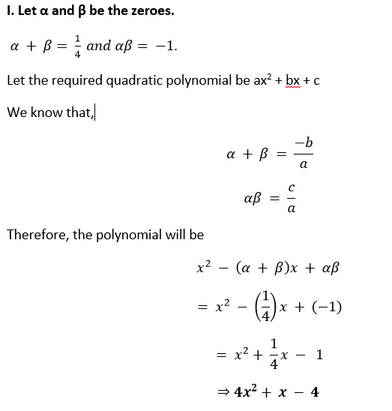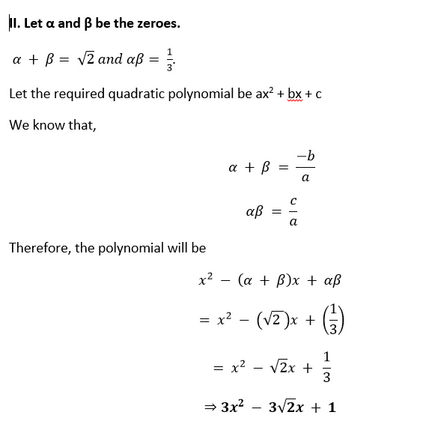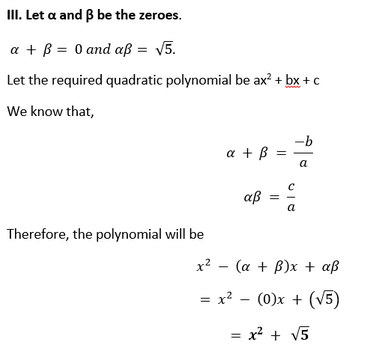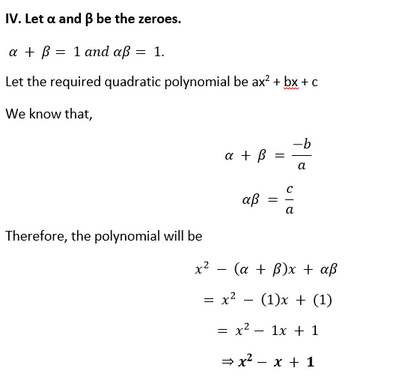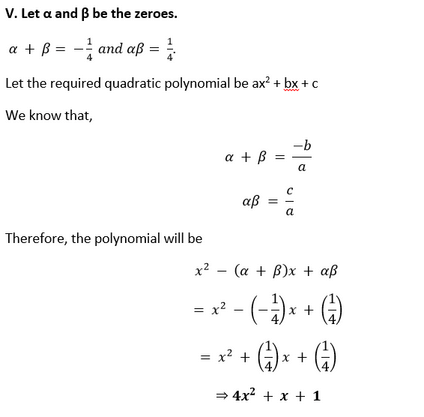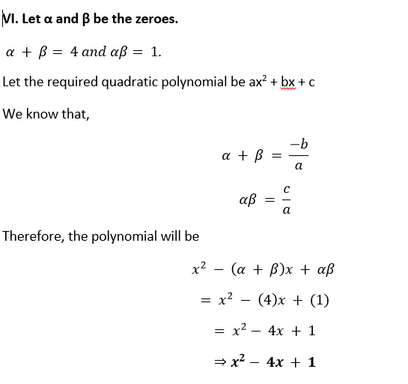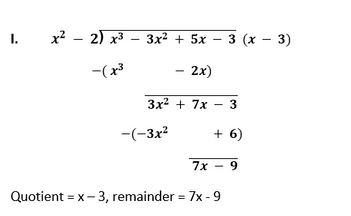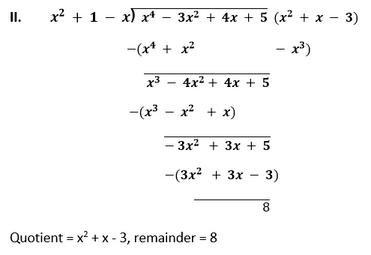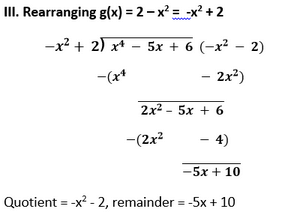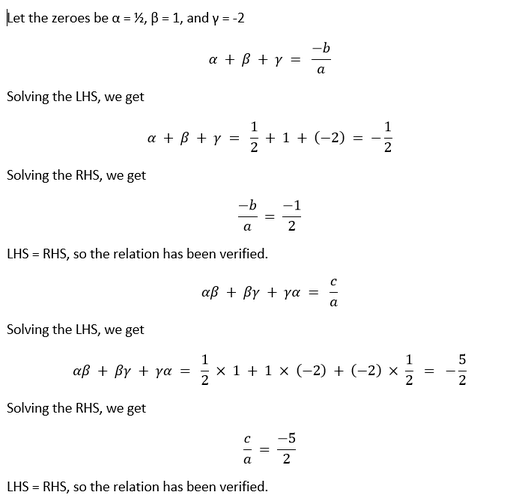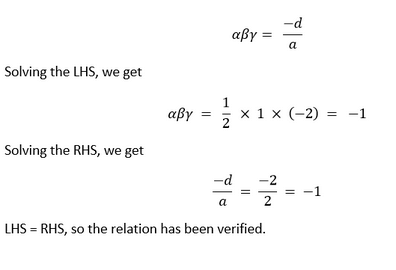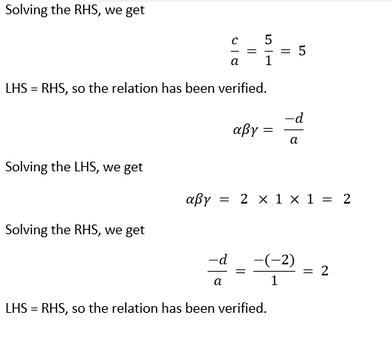NCERT Solutions Class 10 Maths Chapter-2 : PolynomialsExercise 2.11. The graphs of y = p(x) are given in Fig. 2.10 below, for some polynomials p(x). Find the number of zeroes of p(x), in each case. 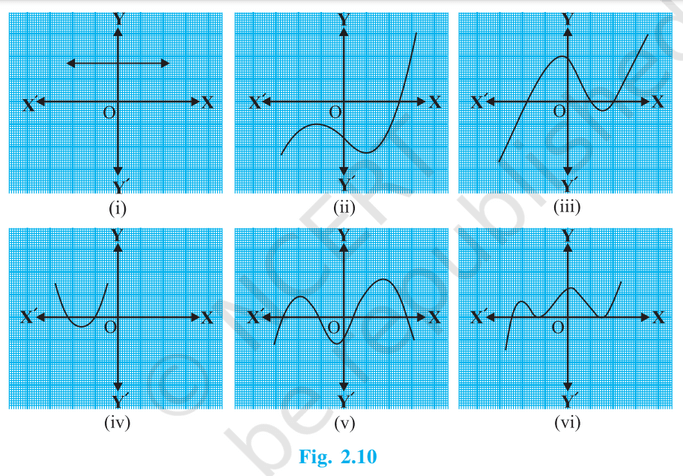
Solution We can find the number of zeroes p(x) has by counting the points of intersection of the graph on X-axis. By applying this knowledge, we can conclude that the graphs have following numbers of zeroes:
2. Find the zeroes of the following quadratic polynomials and verify the relationship between the zeroes and the coefficients.
Solution 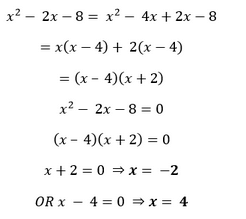
Hence, the given polynomial has two zeroes. Verification 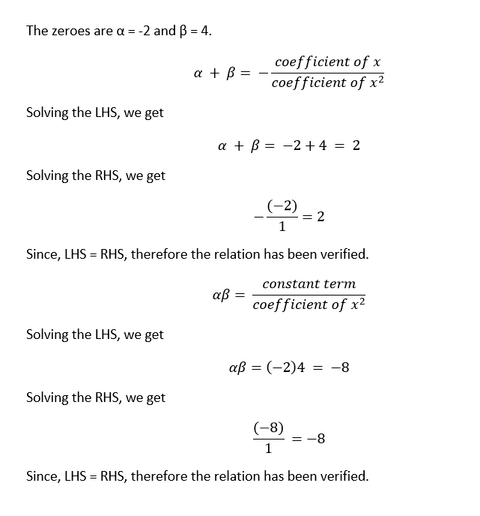
II. 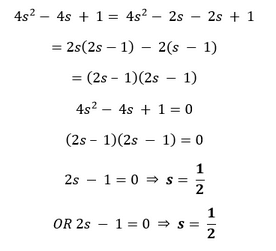
Hence, the given polynomial has two zeroes. Verification 
III. 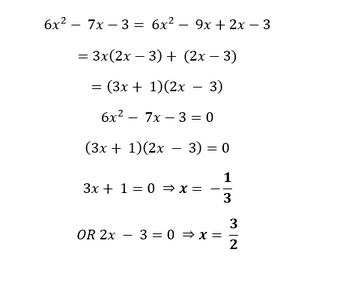
Hence, the given polynomial has two zeroes. Verification 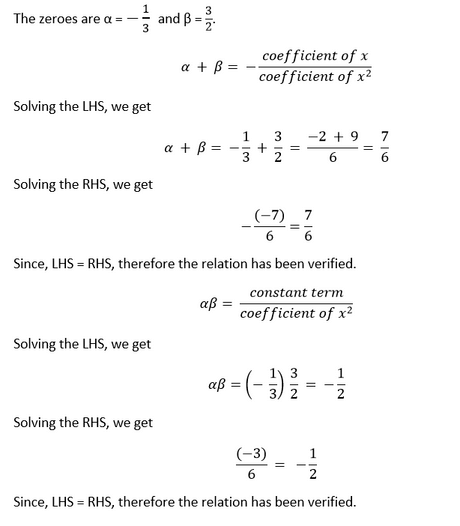
IV. 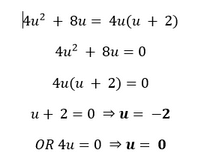
Hence, the given polynomial has two zeroes. Verification 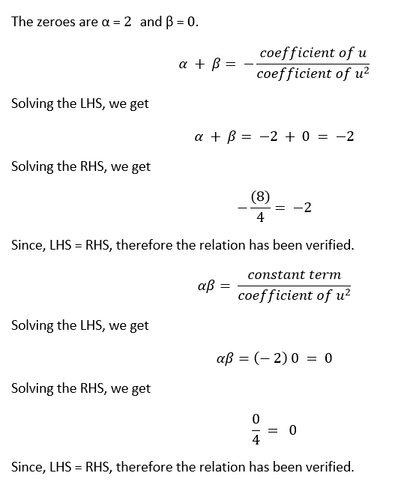
V. 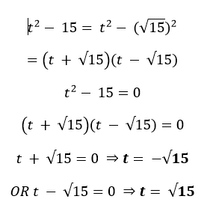
Hence, the given polynomial has two zeroes. Verification 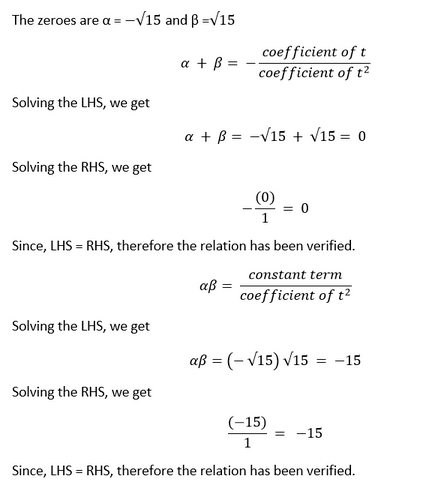
VI. 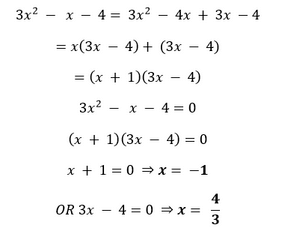
Hence, the given polynomial has two zeroes. Verification 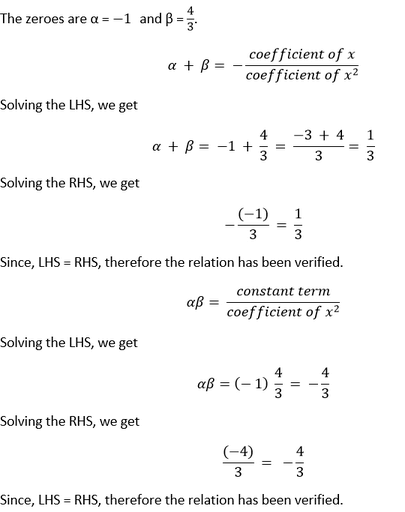
3. Find a quadratic polynomial each with the given numbers as the sum and product of its zeroes respectively.
Solution
Exercise 2.31. Divide the polynomial p(x) by the polynomial g(x) and find the quotient and remainder in each of the following :
Solution
2. Check whether the first polynomial is a factor of the second polynomial by dividing the second polynomial by the first polynomial:
Solution 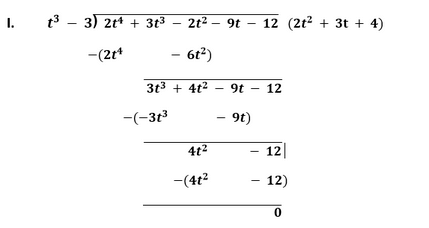
Since, the remainder is zero. Therefore, first polynomial is a factor of the second polynomial. 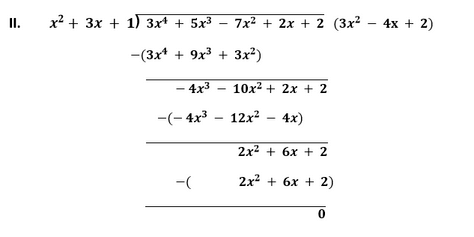
Since, the remainder is zero. Therefore, first polynomial is a factor of the second polynomial. 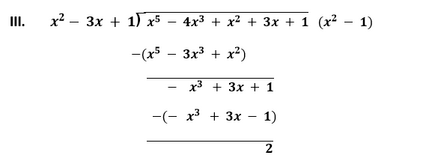
Since, the remainder is not zero. Therefore, first polynomial is not a factor of the second polynomial.
Solution Putting the two zeroes in (x - a)(x - b) 
Now, 1/3 and 3x2 - 5, both are factors of the given polynomial. If we divide 3x2 - 5 by the given polynomial, we get: 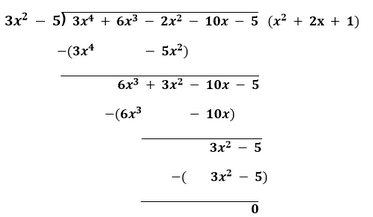
Therefore, 3x4 + 6x3 - 2x2 - 10x - 5 = (3x2 - 5) (x2 + 2x + 1) = (3x2 - 5) [(x2 + x + x + 1)] = (3x2 - 5) [x(x + 1) + 1(x + 1)] = (3x2 - 5) (x + 1) (x + 1) When (x + 1) = 0 � x = -1 and when (x + 1) = 0 � x = -1. Hence, the remaining two zeroes of the given polynomial are -1 and -1. 4. On dividing x3 - 3x2 + x + 2 by a polynomial g(x), the quotient and remainder were x - 2 and -2x + 4, respectively. Find g(x). Solution We know that, p(x) = g(x) × Quotient + Remainder Therefore, x3 - 3x2 + x + 2 = g(x) × (x - 2) + (-2x + 4) x3 - 3x2 + x + 2 + 2x - 4= g(x) × (x - 2) x3 - 3x2 + 3x - 2 = g(x) × (x - 2) On dividing x - 2 with x3 - 3x2 + 3x - 2, we get 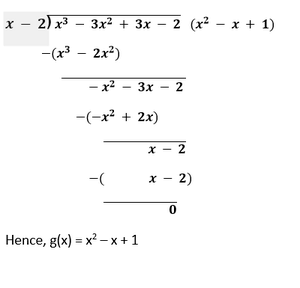
5. Give examples of polynomials p(x), g(x), q(x) and r(x), which satisfy the division algorithm and:
Solution I. p(x) = 8x2 + 4x + 2 q(x) = 4x2 + 2x + 1 g(x) = 2 r(x) = 0 II. p(x) = x3 - 3x2 + 5x - 3 q(x) = x - 3 g(x) = x2 - 2 r(x) = 7x - 9 III. p(x) = x3 - x2 + 2x + 3 q(x) = x - 1 g(x) = x2 + 2 r(x) = 5 Exercise 2.4 (Optional)1. Verify that the numbers given alongside of the cubic polynomials below are their zeroes. Also verify the relationship between the zeroes and the coefficients in each case:
Solution I. Comparing the given polynomial with p(x) = ax3 + bx2 + cx +d, we get a = 2, b = 1, c = -5, d = 2 Now we will check if the given numbers are zeroes of the given polynomial by substituting them for x. 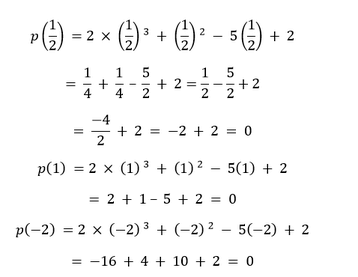
Hence, the given numbers are the zeroes of the given polynomial.
II. Comparing the given polynomial with p(x) = ax3 + bx2 + cx +d, we get a = 1 , b = -4, c = 5, d = -2 Now we will check if the given numbers are zeroes of the given polynomial by substituting them for x. 
Hence, the given numbers are the zeroes of the given polynomial. 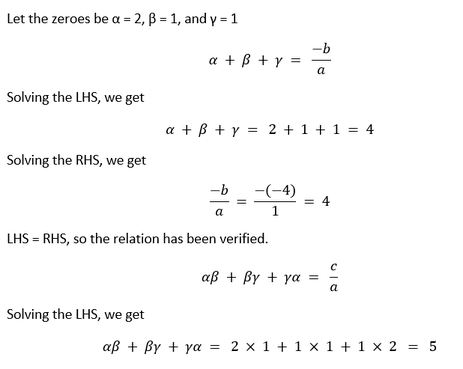
2. Find a cubic polynomial with the sum, sum of the product of its zeroes taken two at a time, and the product of its zeroes as 2, -7, -14 respectively. Solution 
3. If the zeroes of the polynomial x3 - 3x2 + x + 1 are a - b, a, a + b, find a and b. Solution Comparing the given polynomial with Ax3 + Bx2 + Cx + D, we get A = 1, B = -3, C = 1, and D = 1 
4. If two zeroes of the polynomial x4 - 6x3 - 26x2 + 138x - 35 are 2 � √3, find other zeroes. Solution Substituting the two zeroes in (x - a) (x - b) 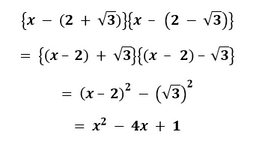
Now, x2 - 4x + 1 is a factor of the given polynomial. If we divide x2 - 4x + 1 by the given polynomial, we get: 
Therefore, x4 - 6x3 - 26x2 + 138x - 35 = (x2 - 4x + 1) (x2 -� 2x - 35) = (x2 - 4x + 1) (x2 - 7x + 5x - 35) = (x2 - 4x + 1) {x(x - 7) + 5(x - 7)} = (x2 - 4x + 1) (x - 7) (x + 5) Hence, the two remaining zeroes will be 7 and -5. 5. If the polynomial x4 - 6x3 + 16x2 - 25x + 10 is divided by another polynomial x2 - 2x + k, the remainder comes out to be x + a, find k and a. Solution First, we need to divide x4 - 6x3 + 16x2 - 25x + 10 by x2 - 2x + k and find out the remainder. 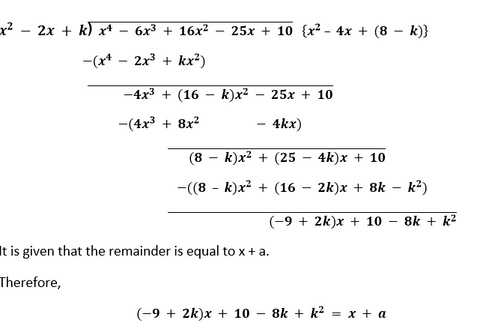
Upon comparing the coefficients, we get two equations First equation - 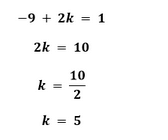
Second equation - 
Substitute k = 5 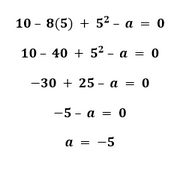
Hence, k = 5 and a = -5.
Next TopicClass 10 Maths Chapter 3
|
 For Videos Join Our Youtube Channel: Join Now
For Videos Join Our Youtube Channel: Join Now
Feedback
- Send your Feedback to [email protected]
Help Others, Please Share




